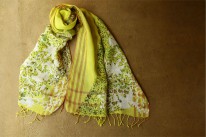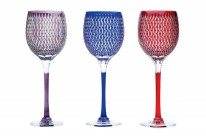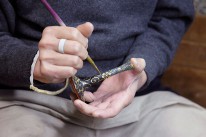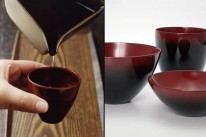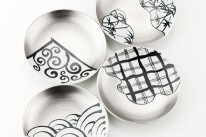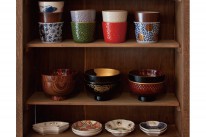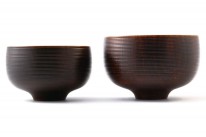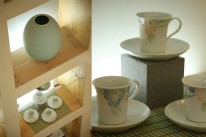What’s ReJAPON? About ReJAPON
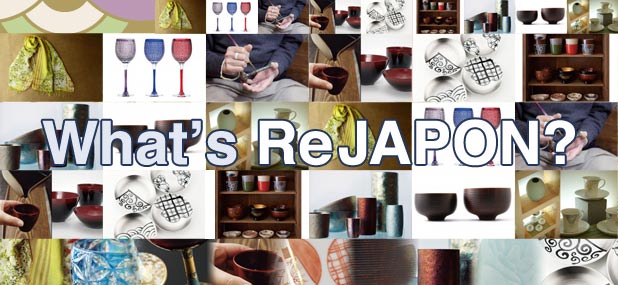
We add modern sensitivity to the tradition industry of Japan whose quality is high, and tell you a brand with the new value.
“Discovering the New from the Old” – “ONKO-CHISHIN” -
In the Confucian tradition, these are the teachings of the past that allow us to acquire a new knowledge. The creation necessarily draws in the tradition, which shows us the way today.
The RJ (“Re-Japon”) Brand, with emphasis on the traditional artistic techniques and Historical background dating back to ancient Japan, yet adapting to the modern contemporary culture, permits customers to enjoy the “Quality of Japanese Lifestyle”. The RJ Brand supports the activities of traditional craftsmen, in various parts of Japan from over several hundreds of years, which constantly proposes innovation and creativity that extend beyond the conventional framework and mindset in terms of design and utility.
Greatly refined by history, the collection of craft imbued by the traditional techniques, and suffused with a modern sense of art, has extended beyond the geographical boundaries of Japan, and has entered the global arena, providing an enormous potential of collaboration with cuisines and wines from different countries. The RJ Brand hopes to offer a touch of Japanese culture by infusing the Japanese “wa” into everyday life all over the world.
Japanese Culture and the History of Japanese Receptacles
(1)Japanese Culture and Receptacles
Stretching approximately 3,000 kilometres from east to west, the slender shape of the Japanese archipelago boasts a myriad of expressions of nature, through the vicissitudes of the transitions of the four seasons. The spiritual support behind the Japanese mentality is said to be the “Eight Million Gods” that dwell in the rich and ever- changing nature. Withholding firmly this belief, Japanese culture naturally takes on a special characteristic that adsorbs the “variety” and “magnanimity” from the beauty of nature. The Jomon ware, created in the Jomon era in various parts of Japan, is one example that illustrates this unique characteristic. Many kinds of Jomon ware were created between 16,000 years to 2,300 years ago. Jomon ware is one of the oldest receptacles in the world. Rice cultivation, that is believed to have started from 3,500 BC in Japan, has taken centre stage together with Jomon ware in the development of Japanese culture.
(2)Japanese Religious Thinking and Japanese sake
In the spiritual rituals of the Japanese Shinto belief that is based on its worship of nature, rice, receptacles, and Japanese sake made from aquatic sources, are of utmost importance and perform sacred roles. Before the Shinto rituals are performed, sacred sake is offered to the Gods. By consuming the sake with the Gods dwelling within after the rituals, the performers obtain spiritual strength from the Gods. The descriptions of the types of wine that originate from Japanese sake were found in the writings of Osumi-no-kuni Fudoki and Harima Fudoki at the beginning of the 8th century. In that period, Japanese sake performed the sacred role of a mediator between the Gods and the commoners as a group ritual.
(3)Japanese sake, Japanese cuisine and sake receptacles
Sake receptacles are used for the consumption of Japanese sake that has an important meaning in ancient Japanese society. Various shapes of the receptacles were contrived at an early stage, including ideas of shapes that are close to the present-day receptacles, and they were created using pottery methods. Lacquered sake receptacles were first used in the 15th century; Porcelain receptacles were first used at the end of 18th century, in mid-Edo era. “Receptacles are the kimono of cuisines” is a famous saying in Japan: The freshness of the materials used, the concise and exquisite beauty of the arrangement of the servings are characteristics of Japanese cuisine. With the rapid spread of Japanese cuisine, receptacles for food and sake also diversify and continue to develop into different varieties all over Japan.
- Osumi-no-kuni refers to an area that is part of present-day Kagoshima Prefecture.
- Fudoki is a description of the natural features, culture and history of a certain region.
- Harima refers to an area that is part of present-day Hyogo Prefecture.
Pottery & Porcelain
It is part of Japanese culture to enjoy the feel and warmth of crockery. Therefore, most Japanese traditional crockery do not have “handles”; rice bowls and miso soup bowls are held by hand and brought to the mouth directly.
Japanese pottery can be categorized into two large groups: porcelain and pottery. The raw material used to make pottery is clay. The base materials go through the firing process at 1,000 to 1,200 degree Celsius, a temperature lower than that of porcelain. Thus, pottery is more fragile than porcelain. However, the Japanese improvised the making by using harmless natural raw materials such as lacquer and gold to fix the broken pieces of the pottery. Retaining the warm texture of soil and not adding decorations, one can enjoy the natural glaze on our products like natural scenery. Representative examples of our ceramic products include Mino Ware, Seto Ware, Bizen Ware, Hagi Ware, Karatsu Ware, Mashiko Ware, Shigaraki Ware, Tokoname Ware
On the other hand, porcelain makes use of stone powder, and incorporating techniques from mainland China, full-fledged production started from Edo era in Japan. Porcelain undergoes the firing process at around 1,300 degrees Celsius, a temperature higher than that of pottery. As a result, the texture of the surface is smooth. Also, colourful and detailed decoration can be added on to it.
Making use of the special characteristic, Chinese-styled red-figured designs are often added to the products. Unique and colourful Japanese decorative styles as represented in Sakaida Kakiemon were then developed from there. In the latter stages of Edo era, the products were exported to Europe, and they were well-received as products that symbolize Japanese-ness. Representative examples of porcelain products include Imari Ware, Kutani Ware, Arita Ware, Tobe Ware.
Lacquer
The surface of pottery is created by coating glossy sap taken from Japanese lacquer tree, which has a strong adhesive property. Only 200 grams of sap can be drawn from one tree, which takes one whole summer. Approximately 10 bowls can be made from this amount of sap.
The etymology of urushi (lacquer) comes from uruwashi (beauty) and urumu (moist). The pioneers of lacquer created this expression to express the succulence of lacquer. The use of lacquer in Japan dates back to 9,000 years ago as ritual tools. Pottery was known as Japanese as it was the most representative of Japanese receptacles back then. However, during the latter stages of Heian era, the use of pottery was restricted only to aristocrats. When the Heian dynasty collapsed, mass production technology was developed and the use of pottery spread to the commoners and became an indispensable tool in daily life.
In the making of pottery, lacquer, gold and silver are used to make decorative designs using the raden workmanship (design in mother-of-pearl inlay). This led to the making of products with a wide variety of designs. Examples of such products include Tsugaru Pottery, Aizu Pottery, Kiso Pottery, Wajimanuri, Yamanaka Pottery and Kyo Pottery.
Other traditional crafts
Glass craft, as represented by Edokiriko, Dyeing products as represented Edo-komon which originated from Kamishimo (used in the costume of samurai). Fabric, iron and silver products. A kind of woodcraft called Sashimono which does not use nails or adhesive products to connect wood pieces together.
There are hundreds and thousands of traditional industries all over Japan. Japanese do not merely mix the tradition and the contemporary, but also draw out the strengths and knowledge of the previous generations, and blend them with the sense of the people in modern society. These will lead to the birth of new age traditional Japanese industries.

